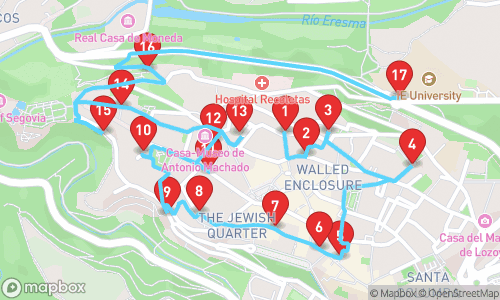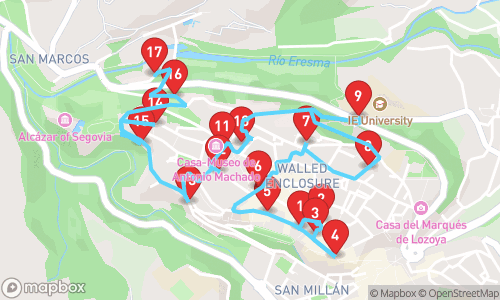
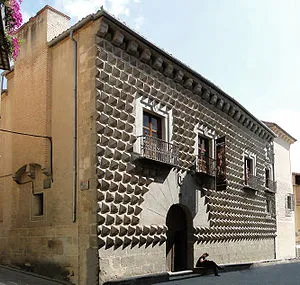

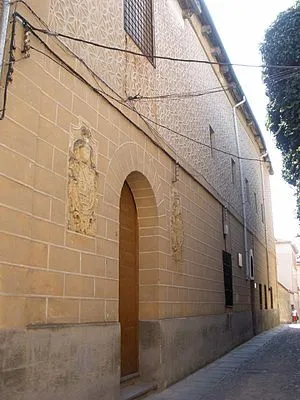
A Timeless Journey Through Historic Segovia

Tour Guide
Jenny Multilingual
Welcome to Segovia! On this GPS guided audio tour, we will visit 15 stops on a route of 2.66km. This tour focusses mainly on history.
Locatello is an app where you can generate personal audio guided tours. Set your preferred distance, guide, language and theme, and a guided tour is created on the spot.
Walking Time
Distance
stops
Language
Tour Stops

calle de Juan Bravo
A historical street in Segovia, it runs from the Plaza del Corpus to Calle de Cervantes, formerly known as "Calle Real" and now named after the comunero Juan Bravo.

Casa de los Picos
A mansion built in the late 15th century, known for its unique granite façade with 617 pi-shaped protrusions and a Renaissance-style courtyard, decorated with Talavera tiles featuring iconic Segovian buildings.
Audio Preview
30 sec
Aqueduct of Segovia
A stone bridge, the Aqueduct of Segovia is a Roman structure that once transported water 15 km from the Rio Frio River to the city of Segovia. It features 167 arches, with the highest point reaching 28.5 meters above the base.

Monasterio de la Inmaculada Concepción (Segovia)
A monastery of cloistered nuns belonging to the Order of the Immaculate Conception, the Monasterio de la Inmaculada Concepción is a place of spiritual retreat and contemplation. It is home to the Hermanas Concepcionistas Franciscanas de Segovia.
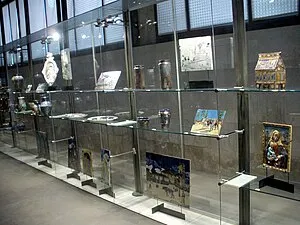
Museo Zuloaga
A museum showcasing Spanish ceramics from the early 20th century, featuring approximately 150 pieces, as well as works by painter Ignacio Zuloaga, housed within a historic Visigothic church in Segovia.

Church of San Juan de los Caballeros
A Romanesque church in Segovia, it was a Catholic temple before being converted into the Zuloaga Museum. Futhermore, it was declared a monumento histórico-artístico in 1931 and currently holds the status of Bien de Interés Cultural.
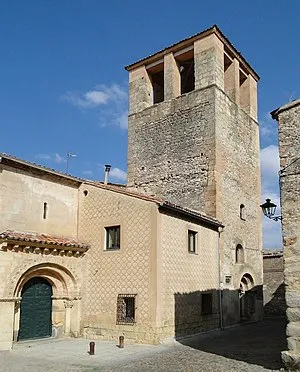
Church of San Quirce
A church building of Romanesque style, dating back to the 12th century, featuring a unique design with a tower and a small chapel, which was abandoned as a place of worship and repurposed as an almacén, then restored and now serves as the headquarters of the Real Academia de Historia y Arte de San Quirce.
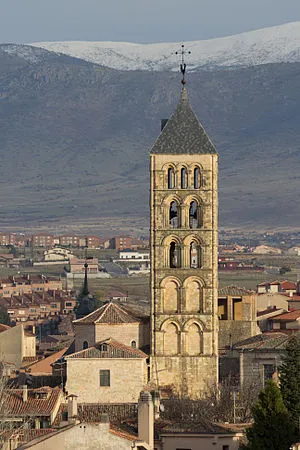
Tower of San Esteban
A Romanesque-Byzantine tower dating back to the 12th century, known for its impressive height and rich decoration, featuring 101 unique capitals and Romanesque elements hidden beneath Baroque touch-ups.
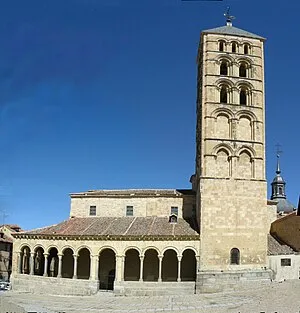
Church of San Esteban
A medieval Romanesque church dating back to the 12th century, noted for its architectural style and featuring a designated Bien de Interés Cultural bell tower, protected since 1896.
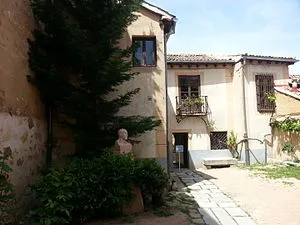
Casa-Museo de Machado
A historic house museum dedicated to the life and works of Spanish poet Antonio Machado, featuring his former residence, authentic furniture, and personal belongings, as well as exhibits and artworks from local and international artists.
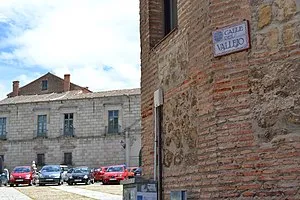
Calle del Vallejo
A street in Segovia, the Calle del Vallejo, starts at the Calle de Valdeláguila and ends at the Calle del Barranco.
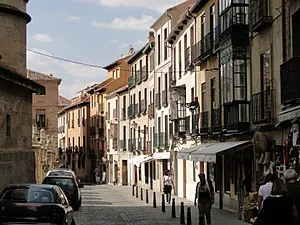
Calle del Marqués del Arco, Segovia
A street in Segovia, Spain, originating from the Plaza Mayor and ending at the Plaza de la Merced, and named after Joaquín de Isla Fernández, Marqués del Arco, who was the city's mayor in 1867. The street features a 16th-century palace at the entrance.
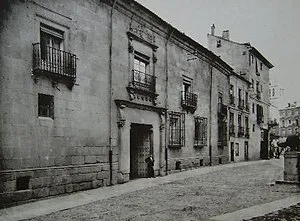
Palace of the Marqués del Arco
A 16th-century palace with a Renaissance design, features a granite facade with a Plateresque-style portico, a courtyard, and an impressive staircase. It is a category A listed palace.
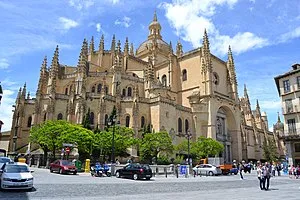
Segovia Cathedral
A grand Catholic cathedral in the Flamboyant style, established in 1768, and featuring a unity of late Gothic style architecture with tall vaults, fine tracery windows, and numerous stained glass windows.
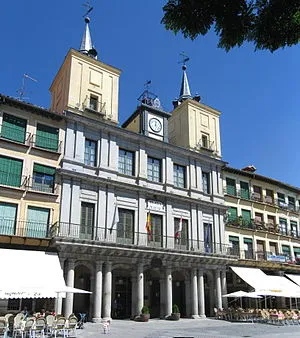
Segovia town hall
A casa consistorial de Segovia is the town hall building, designed by Pedro de Brizuela in 1610, and features a sober, herreriano style architecture.
Download App
Experience this tour and many more with our mobile app. Available for iOS and Android.
Audio Preview
Tour Map
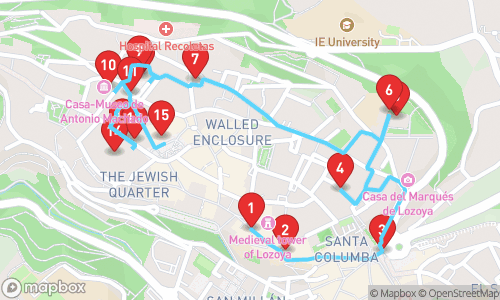
Quick Facts
- ✓GPS-guided navigation
- ✓Professional audio narration
- ✓Offline maps available
- ✓Premium content included
Why Choose This Tour
Expert Local Guide
Narrated by Jenny Multilingual, specializing in general tourism
Flexible Timing
Take the tour at your own pace, any time of day
